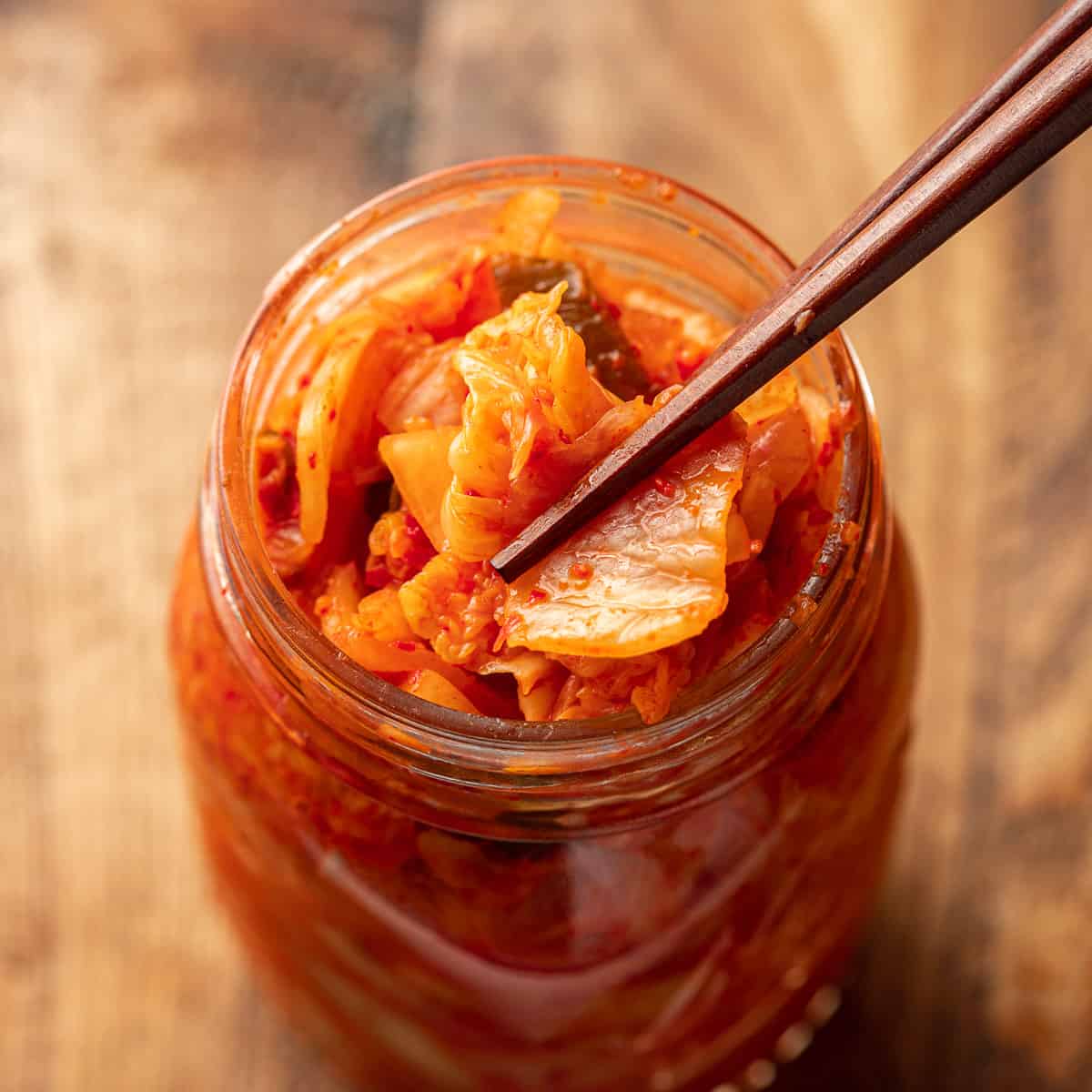
This homemade vegan kimchi is fun to make and packed with spicy flavor! The perfect side for all your favorite Korean dishes.
- ½ cup salt
- 1 medium (4 pound or 1.8 kg) head of napa cabbage
- ¼ cup gochugaru, plus more to taste (up to ½ cup)
- 6 garlic cloves
- 1 tablespoon freshly grated ginger
- ½ medium pear, peeled and cored
- 3 tablespoons gochujang
- 2 tablespoons white or red miso paste
- 1 medium (1 pound or 450 gram) daikon radish sliced into thin strips
- 6 scallions, cut into 1-inch pieces
-
Place 1 quart of water into a large stock pot and place it over high heat. Bring the water to a simmer, then remove the pot from heat.
-
Stir the salt into the water until dissolved, then stir in an additional 2 quarts of cold water.
-
Next, clean and chop your napa cabbage into 1-2 inch pieces, discarding the stems.
-
Test the temperature of your salt water to ensure that it's no longer hot (warm is fine). If it is you can add a bit more cold water or wait a bit.
-
Add the cabbage to the pot and push it down to submerge. You can add up to another quart of water if needed. (Note 1)
-
Allow the cabbage to soak in the salt water for 8 to 16 hours.
-
After the cabbage has soaked, drain it into a colander and rinse it well under cold water to remove any excess salt. Allow the cabbage to sit in the colander and drain for 30 minutes to 2 hours.
-
While the cabbage drains, make the paste. Place the gochugaru, garlic, ginger, pear, gochujang, and miso paste into a food processor or blender and blend to a paste. You can add up to ½ cup of water to help this along, if needed. (Note 2)
-
Place the cabbage, daikon and scallions into mixing bowl and add the paste. Stir well until the ingredients are combined. You can dig in with your hands, but be sure to wear gloves if you do.
-
Pack the kimchi into fermentation containers, such as glass jars, leaving at least an inch of headspace at the top. Push the vegetables down as best you can to get them below the level of the liquid.
-
Allow the kimchi to ferment at room temperature for 3 to 21 days, opening the containers to release built up gasses at least once per day, or more often in warmer conditions. (Notes 3 and 4).
-
When your kimchi is as sour as you want it to be, transfer the containers to the fridge for storage.
- I like to place a plate over my cabbage and press it down in order to keep most of the cabbage submerged. If you choose not to use a plate you'll need to stir your cabbage a couple times as it soaks.
- A food processor works better than a blender here, and the smaller the device the better. You can also grind the garlic, ginger, and pear using a mortar and pestle, then stir in the remaining ingredients.
- Kimchi will ferment faster under warmer conditions.
- I like to cover the tops of my jars with a towel when opening, just in case any juice sprays, which does happen sometimes!
- Recipe makes about 2 quarts of kimchi.